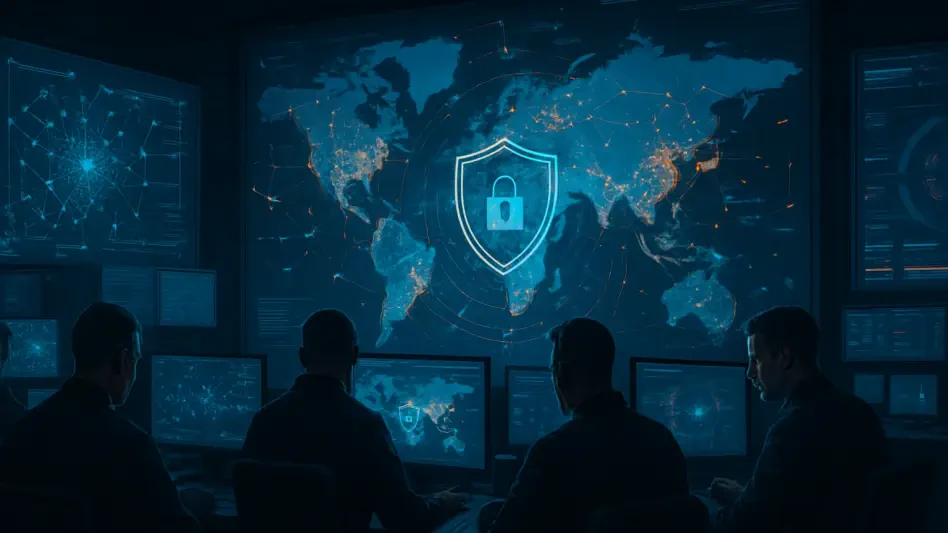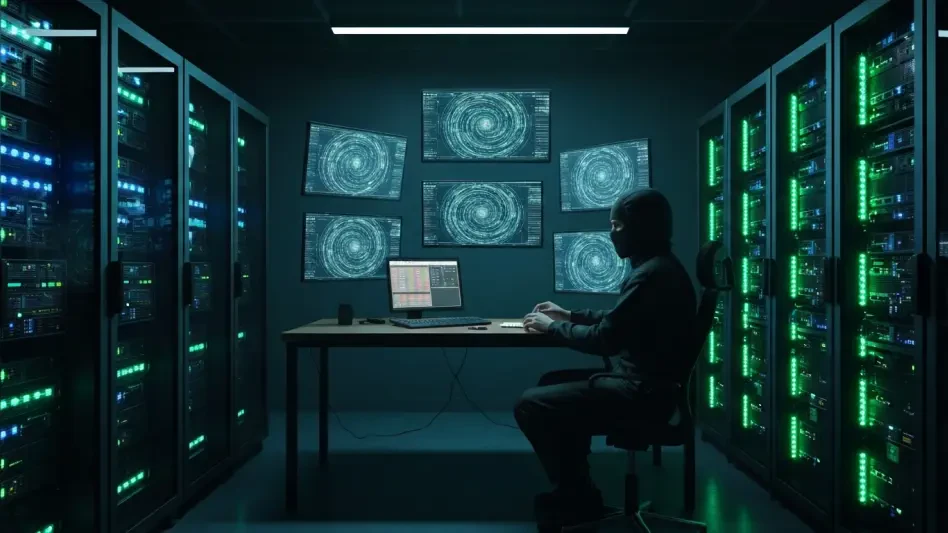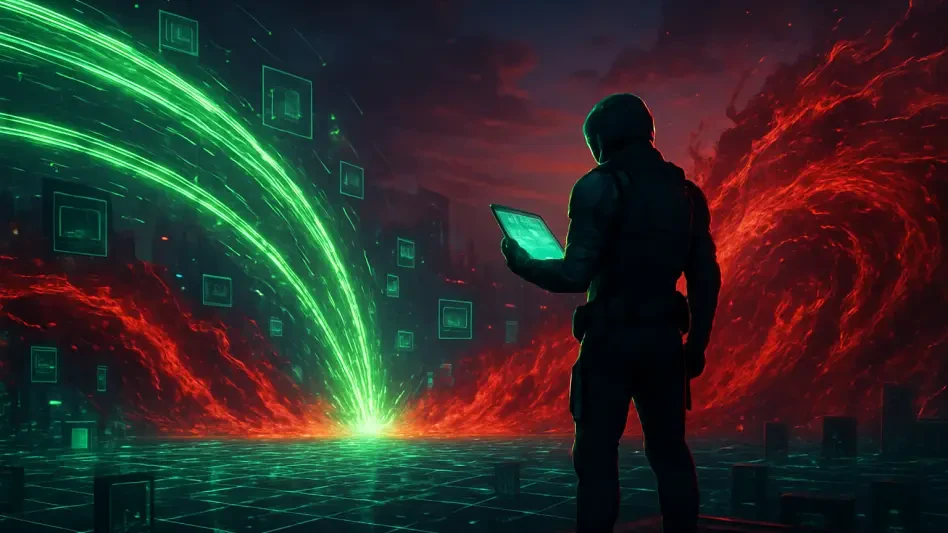In a world where digital battlegrounds are becoming as critical as physical ones, the concept of establishing a dedicated Cyber Force within the U.S. military has emerged as a pressing topic that demands serious consideration. A comprehensive report from the Center on Cyber and Technology Innovation at The Foundation for Defense of Democracies (FDD) presents a detailed framework for such a branch, potentially under the leadership of President Donald Trump, who previously set a precedent with the creation of the Space Force. This proposal arrives at a pivotal moment when cyberspace is widely acknowledged as a vital warfighting domain, requiring specialized strategies to counter sophisticated and ever-evolving threats. The FDD report, crafted by experts Mark Montgomery and Erica Lonergan, offers a blueprint that spans organizational design, workforce needs, and implementation timelines. As discussions intensify around the feasibility and urgency of this initiative, the idea of a Cyber Force sparks both curiosity and debate about how best to safeguard national security in the digital age.
The Need for a Specialized Cyber Branch
The primary rationale behind the push for a Cyber Force lies in the unique nature of cyberspace as a domain of warfare, comparable to land, sea, air, and space. The FDD report argues that just as each of these domains has a dedicated military service with tailored expertise and culture, cyberspace demands a similar specialized entity to support U.S. Cyber Command (CYBERCOM). While CYBERCOM focuses on executing operations, known as “force employment,” the envisioned Cyber Force would take on “force generation,” which encompasses the critical tasks of recruiting, training, and equipping personnel. This division of responsibilities aims to ensure that cyber capabilities are developed with precision and depth, addressing the distinct challenges of digital warfare that differ markedly from traditional military engagements. Without such a dedicated service, the report suggests, the U.S. risks falling behind in a domain where adversaries are increasingly active and innovative, posing threats to both military and civilian infrastructure.
Beyond the conceptual need for specialization, the current state of cyber mission forces reveals significant gaps that a Cyber Force could address. At present, CYBERCOM relies on 147 teams drawn from existing military branches, but these units often grapple with readiness shortfalls and organizational inefficiencies. Congressional concern over these issues is evident in the fiscal 2025 National Defense Authorization Act, which mandates a study on alternative structures, including the potential for a standalone Cyber Force. The FDD report posits that a dedicated service would streamline efforts, creating a unified approach to building and sustaining cyber expertise. This would not only improve operational readiness but also ensure that resources are allocated effectively to meet the demands of a threat landscape that evolves at a breakneck pace. The emphasis here is on creating a system that prioritizes long-term capability over patchwork solutions, positioning the military to respond proactively to digital vulnerabilities.
Organizational Design and Practical Solutions
One of the most pragmatic aspects of the FDD proposal is the suggestion to place the Cyber Force under the Department of the Army, akin to how the Space Force operates within the Department of the Air Force. This arrangement is designed to curb the high overhead costs associated with establishing a fully independent department, complete with its own secretary and chief of staff, especially in the initial stages. By nesting the Cyber Force within an existing structure, the military can focus resources on building capabilities rather than bureaucratic infrastructure, at least in the short to medium term. This approach reflects a balance between the need for a distinct identity for cyber operations and the fiscal realities of military budgeting. It also allows for a smoother integration with established systems, leveraging the Army’s existing administrative and logistical frameworks while still carving out space for the unique needs of cyber warfare.
Equally innovative are the proposals surrounding personnel and cultural adaptations for the Cyber Force. Recognizing the competitive nature of the tech industry, the report advocates for an all-officer force to address pay disparities and ensure a workforce with a strong educational foundation, critical for mastering complex cyber challenges. Additionally, it calls for a substantial civilian component, drawing inspiration from the National Security Agency (NSA), to tap into specialized expertise that may not be readily available within traditional military ranks. Perhaps most forward-thinking is the push for a flexible force structure, departing from the static team configurations currently in use. This adaptability is deemed essential to keep pace with the rapid evolution of cyber threats and technological advancements, ensuring that the force can reconfigure units based on mission demands. Together, these elements aim to create a workforce and culture uniquely suited to the digital domain, distinct from conventional military models.
Implementation Challenges and Diverse Perspectives
The FDD report lays out a meticulous phased rollout plan for the Cyber Force, beginning with a three-month initial stage focused on establishing leadership, selecting personnel, determining basing locations, and updating relevant policies. This foundational period is crucial for setting the tone and direction of the new branch. Following this, a two-year build-out phase is proposed, carefully sequenced to expand capabilities while integrating a National Guard component to bolster national expertise during crises. This phased approach prioritizes stability, ensuring that each step builds on the last to create a cohesive and effective force. The inclusion of a National Guard element also underscores a broader vision of cyber defense as a “whole of nation” effort, drawing on state-level resources and civilian skills to enhance resilience against digital threats. Such a timeline reflects an understanding that rushing implementation could lead to inefficiencies, while a deliberate pace allows for adjustments based on real-world feedback.
However, the path to a Cyber Force is not without contention, as opinions within military and political spheres remain divided. Senator Angus King, a prominent figure on the Senate Armed Services Committee, has voiced reservations, arguing that optimizing existing tools and structures might be a more effective approach than creating a new branch. This perspective resonates with a broader segment of policymakers and experts who caution against overhauling established systems, fearing that the costs and disruptions may outweigh the benefits. Meanwhile, the FDD report aligns with other forward-looking analyses, such as upcoming work from the Center for Strategic and International Studies (CSIS), which also explores pathways for a Cyber Force. This divergence of views highlights the complexity of the issue, where the urgency to address cyber vulnerabilities must be weighed against practical and strategic considerations. The debate underscores the need for thorough evaluation to ensure that any decision serves the long-term interests of national security.
Looking Ahead to Digital Defense Strategies
Reflecting on the discourse surrounding a potential Cyber Force, it becomes clear that the digital realm has reshaped the very definition of warfare, demanding innovative responses from military institutions. The FDD report provides a robust framework that tackles everything from organizational placement under the Army to pioneering personnel models with an all-officer and civilian-heavy workforce. Its phased implementation plan offers a structured path forward, while the inclusion of a National Guard component highlights a collaborative approach to national defense.
Moving into the future, the focus should shift toward actionable steps, such as conducting in-depth feasibility studies to assess the proposed structure against current cyber mission outcomes. Decision-makers must also prioritize dialogue among stakeholders to reconcile differing views, ensuring that any move toward a Cyber Force is grounded in consensus and strategic necessity. Additionally, investing in pilot programs to test flexible force structures could provide valuable insights before full-scale implementation. These steps, taken with deliberate care, would help refine the vision of a dedicated cyber branch, ensuring that the U.S. military remains agile and prepared for the digital threats of tomorrow.








